
|

|
accessible info : Kyoto
Metro
/ JR / Hankyu
/ Keihan
/ Kintetsu
/ Hotel
|
|
 |
|
Arashiyama
|
   |
 |
|
The tourist district
particulary famous for cherry blossoms and autumn leaves. Visitors enjoy walking
along the river side. The path through the bamboo forest is a
gentle upslope. Iwatayama Monkey Park is located in the Arashiyama mountains, and this park hasonly stairs. Both Hankyu and JR railway stations are wheelchair accessible.
Sagano Romantic Train is also wheelchair accessible. http://www.arashiyama-navi.info/
|
|
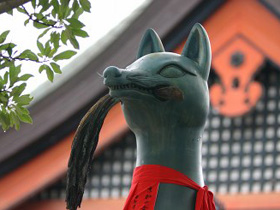 |
|
Fushimi
Inari |
   |
 |
|
The head shrinefor some 40,000 Inari shrines throughout Japan. There is a steep accessible ramp to the main shrine. The back side of the main shrine is the starting point to hike the trails lined with thousands of orange(red) torii gates. Taking many stairs on the trails, visitors
must climb up and down Mt. Inari. So it is not suitable for wheelchair users.
http://inari.jp |
|
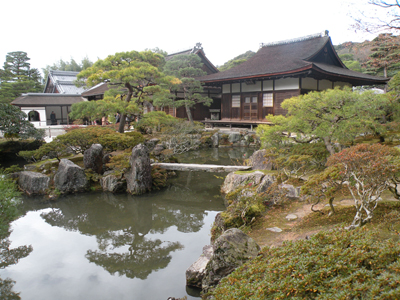 |
|
Ginkakuji
|
   |
 |
|
Silver
temple in Japanese language. No problem for going around on
wheelchair inside the temple. There are stairs to view spot of
back mountain. Long slope to the entrance from road. Famous walk
trail " Tetsugaku no michi (philosophy road) stats from
Ginkakuji to south..
http://www.shokoku-ji.jp/g_about.html
|
|
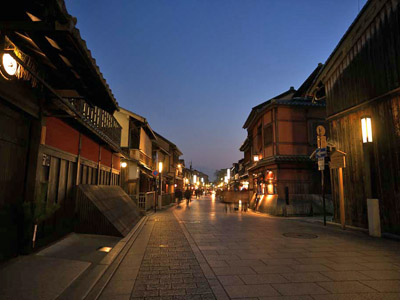 |
|
Gion |
   |
 |
|
Kyoto’s famous entertainment and Geisha
district. There are many traditional Kyoto wooden houses. Some streets are pedestrian zones. So everybody, including wheelchair users, can feel free to walk around the
streets. Some restaurants and shops have steps and stairs because they are
old. Gion Corner Theater is wheelchair accessible. Enjoy dance and music performances by Maiko.
http://www.kyoto-gioncorner.com/global/en.html |
|
 |
|
Golden
Pavilion |
   |
 |
|
Called
" Kinkakuji " in Japanese.
Wheelchair users can reach the view point to see Golden
Pavilion because the garden area is flat. Later half of the main
route has stairs, so
wheelchair users have to turn around in front of the stairs and go back the way they come. No train station around
here. Not many non-step buses and so many people in autumn high
season. So taxis are the best choice for wheelchair users. Many welfare
taxis run in Kyoto. (Booking is needed.)
http://www.shokoku-ji.or.jp
|
|
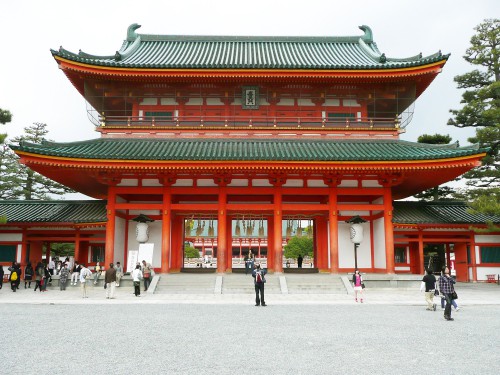 |
|
Heian
Jingu Shrine |
   |
 |
|
We can enter the shrine for
free. Accessible ramps at the main gate. The courtyard is covered with gravel, so wheelchair users will find it hard to move
around. Wheelchair accessible toilets are available inside the shrine.
http://www.heianjingu.or.jp/index_e.html
|
|
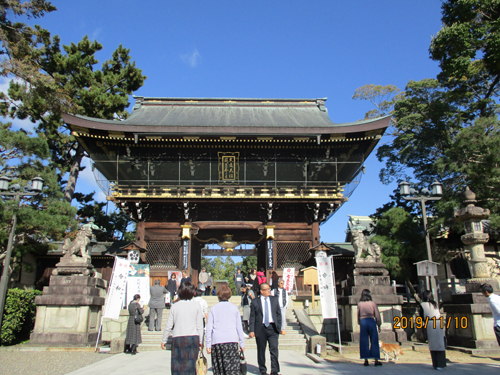 |
|
Kitano
Tenmangu |
   |
 |
|
Very
famous shrine for Japanese, specially god of academy. Many
students come here to buy the lucky charm for passing examination.
Easy to visit on wheelchair. There is a smooth road and ramp to
main shrine. Built in AD 974. Free to enter and parking. Located
near Golden temple.
http://kitanotenmangu.or.jp/
|
|
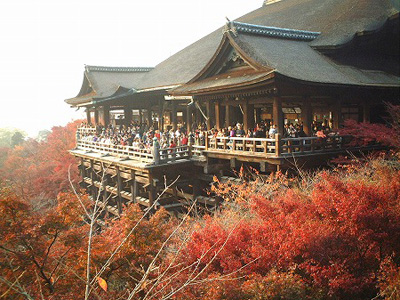 |
|
Kiyomizu-dera
Temple |
   |

|
|
The most popular tourist spot in Kyoto.
The historic temple located on a mountain. W must go along the steep road to the
temple because the approach road runs up the hill. Visitors use stairs in the temple area, but there is a wheelchair route (car road) behind the main route. There is a locked gate with an entry phone, but taxies and cars that wheelchair users are on can enter through the gate by using the entry phone. From the gate parking area, wheelchair users climb up a short hilly road and enter the temple. There are some wooden ramps inside the temple.
http://www.kiyomizudera.or.jp/ |
|
 |
|
Kyoto
Aquarium |
   |
 |
|
Opened in
2012. The aquarium is located near Kyoto Station. Fully wheelchair accessible. The dolphin show is wonderful. There are wheelchair spaces to enjoy the show.
http://www.kyoto-aquarium.com/
|
|
 |
|
Kyoto
Railway museum |
   |
 |
|
Opened in
2016. Located beside Kyoto aquarium. 20-30 min walk from JR Kyoto
station. We study railway history in Japan. Many ramps on
exhibition and wheelchair toilets.
http://www.kyotorailwaymuseum.jp/en/
|
|
 |
|
Manga
museum |
   |

|
|
Manga
(Japanese comic books) unique museum located on Metro Oike station
near Nijo castle. Free to read Manga and study the history. Good
to visit on rainy days and for kids. We can go out the museum
during the daytime. The building was used as a primary school for
a long time. Yes, we can enjoy this old building too. The facility
is totally wheelchair accessible.
https://www.kyotomm.jp/en/ |
|
 |
|
Monkey
park |
   |
|
|
Located
Arashiyama. This unique park is one of very popular tourist spots
for Americans and Europeans. Wild monkey heaven and nice view. The
height of monkey area is 155 meter. We must climb up the mountain
on stairs. It is not possible for wheelchair users to access the
park.
http://www.kmpi.co.jp/english/ |
|
 |
|
Nanzenji |
   |

|
|
The massive entrance
gate called "Sanmon" is made of wood. The view from the temple tower is wonderful. But visitors have to climb the long stairs to the top of
the tower. The water pipe bridge brought water from Lake Biwa to Kyoto.
Tofu
restaurants are very popular in this area.
http://www.nanzen.net/english |
|
 |
|
Nijo
castle |
   |
 |
|
A huge one story building that is fully wheelchair
accessible. This castle was the Kyoto residence of the Tokugawa Shogun in the Edo period. There is an accessible ramp at the entrance. Wheelchair users need to transfer to
castle's indoor wheelchairs
because hard wheels of their wheelchairs may damage the corridors.
http://www.city.kyoto.jp/bunshi/nijojo |
|
 |
|
Ninnaji
|
   |
 |
|
UNESCO
world treasure big temple built in 888. Located between Arashiyama
and Golden pavilion. Cherry blossom in the temple is very famous.
There are some steps in the temple, but they made many ramps
beside the main gate and a wheelchair
route in east side.
http://www.ninnaji.or.jp
|
|
 |
|
Nishiki
market |
   |
 |
|
Famous
shopping arcade in Kyoto central. Many local individual stores
such as fish, meats, vegetables, snacks, delicatessen. Today it is
too popular for foreign tourists. Be careful to walk this narrow
street. |
|
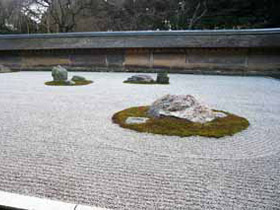 |
|
Ryoanji Temple |
   |
 |
|
Zen
Temple which has a famous rock garden. Many stairs in front of
the main gate called Sanmon. There is a non-step road near the
second parking area, but wheelchairs cannot enter the temple area.
So wheelchair users cannot watch the rock garden if they cannot walk.
http://www.ryoanji.jp
|
|
 |
|
Sanjusangen-do |
   |

|
|
A good tourist spot for wheelchair users. The corridor is flat and straight.
Wheelchair users share the same route with other visitors. In the temple, visitors should put off their shoes, so wheelchair users need to wipe the wheels of their wheelchairs or transfer to temple’s wheelchairs. Kannon statues stand in the 120-meter-long temple hall.
http://sanjusangendo.jp |
|
 |
|
Tenryuji
temple |
   |
 |
|
Located in
Arashiyama. A wheelchair route
map is displayed at the entrance. Entering the north gate and
going west is a recommended route. But there are many gravel paths
and some small steps in the temple area. Wheelchair users will find it hard to move around
without an attendant. However, it is never impossible to visit.
http://www.tenryuji.com |
|
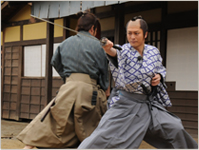 |
|
Toei
Kyoto Studio Park |
   |
 |
|
The theme park of the Edo period of Japan. It is also used as a studio for TV dramas and movies. We can see many Samurai on the shows. Experience the world of Japanese period dramas. Enjoy many attractions (Costume Photo Shop, Haunted House, Ninja Mystery House, etc.), too.
http://www.toei-eigamura.com/
|
|
 |
|
Tohukuji
temple |
   |

|
|
Almost wheelchair accessible. There are
many accessible ramps and flat paths in the temple area. But visitors
need to take stairs
to the north side. Free wheelchair rental is available. This temple is famous for autumn
colors, so it is very crowded in autumn colors season. Both JR and
Keihan railway stations are wheelchair accessible.
http://www.tofukuji.jp/index2.html |
|
 |
|
Toji
temple |
   |

|
|
Most
famous and highest 5 floor wooden tower in Japan. 55 meter high,
build in 1644. Located 1 km southwest from JR Kyoto station.
Kintetsu Toji station is wheelchair accessible. The garden and
halls are wheelchair accessible, but the 5 floor tower has stairs
at entrance.
http://www.toji.or.jp/
|
|
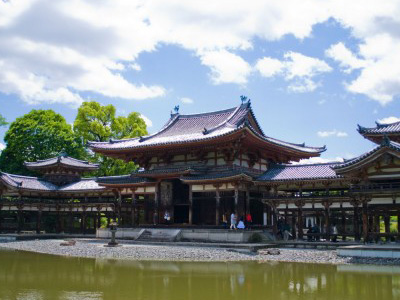 |
|
Uji
Byodoin |
   |
 |
|
This temple has accessible ramps and no step inside.But wheelchair users find it a bit hard to move on gravel paths in the courtyard. The Byodoin Museum which has a lift is fully wheelchair accessible. Wheelchair rental is available. Uji city is
very famous for green tea. Many nice green tea cafe in this area. Do not miss
trying green tea and green tea ice cream after visiting Byodoin.
http://www.byodoin.or.jp
|
|
 |
|
Amanohashidate
|
   |
 |
|
Actually
this is not Kyoto central. Located 90 minutes by car on the high way.
One of three greatest view in Japan. Others are Matsuhima near
Sendai and Miyajima near Hiroshima. If you look the view between
legs, happiness comes. There are 2 view spots. The south one is
only taking a lift. The north one has a driving route. So
wheelchair users can access the north view spot.
http://www.amanohashidate.jp/ |
|
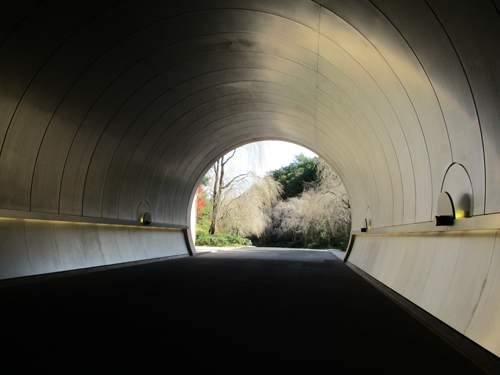 |
|
Miho
Museum |
   |
 |
|
1
hour from Kyoto by car. Located in Shigaraki, Shiga region. Some
says best museum in Japan. It is true. Incredible location in nature. Very quiet and modern architecture. Fantastic road to main building.
Visit cherry blossom, fresh green or autumn season. Hilly road to
main building from entrance. Wheelchair users need a push or use
electric cart.
http://www.miho.or.jp/ |
|
|

|



![]()